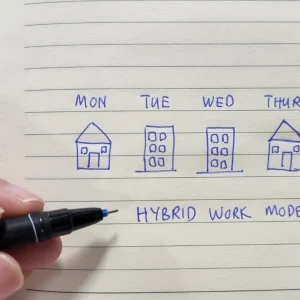Steve Wozniak’s recent assertions that continued cloud computing adoption will lead to "horrible consequences" in the next five years are quite simply wrong. He couldn’t be any more mistaken in his belief that the cloud does not offer businesses the level of control that they need over their data. His assumptions fail to take into account that cloud computing has evolved since its first iteration and will continue to do so.
The cloud isn’t a black hole
Wozniak proclaims that when using a cloud solution, organisations are blindly casting their data into a black hole that they can’t control. He would have businesses believe that storing data in the cloud is synonymous with surrendering ownership of it. Again, this assumption is based on a purely one-dimensional view of cloud computing.
There are many services available today where the provider specifically and explicitly gives the user the option and choice of where to place their data.
Wozniak claims that "the more we transfer everything onto the web, onto the cloud, the less we’re going to have control over it." This supposition that losing control is an inevitable part of moving data from physical servers into the cloud is fundamentally misguided.
The cloud doesn’t have to eradicate the infrastructure that holds the data, nor does it eradicate the network that data is transported on. The business model of the provider is the thing that dictates your level of service. The idea that the only way a provider can make money is by limiting service shows a lack of broader perspective. Organisations can and do get visibility into exactly where their data is, how it is protected and how it is transported. Thinking that the only option with cloud is to cast data into a black hole is beyond naïve.
Beyond control
Cloud computing solutions have quickly evolved to address the concerns around control. Today, businesses should be concerning themselves with how they make the most of the economics and flexibility it can afford.
They should be equipping themselves with the right know-how in order to gain the rewards. It is understanding the different layers of the cloud that clear up the concerns associated with the perceived loss of control that comes with its adoption.
Whilst there is no one-size-fits-all approach, the cloud offers organisations a multitude of solutions for a host of needs. For example, businesses are now bursting applications running in a private cloud (or data centre) into a public cloud when the demand for computing capacity spikes. This enables organisations to lease extra space from external cloud suppliers when they need to, rather than doing the heavy lifting themselves. It effectively enables them to retain control of their data, whilst reaping the benefits of the extra capacity available in the public cloud.
A clearer picture
For organisations to truly benefit from this new wave of technology innovation they need to move beyond Wozniak’s assertions, and gain a true picture of what cloud computing can deliver.
The clarity of what is on offer really only comes with experience and because, unlike many technologies, cloud computing is instantly accessible, many Friday afternoon experiments can reap invaluable first hand experience. Given the murkiness of many cloud service descriptions it is best to beware of the marketing and try it on for size first.
The cloud is on the up
In spite of Wozniak’s irrational fears, the cloud computing industry is on the up and continues to empower businesses. It has become the fastest growing segment of the global outsourcing market according to Gartner, with cloud services spending set to nearly double from $3.4 billion in 2011 to $5 billion this year.
There are those like Wozniak, who wrongly think that the cloud only comes in one size, with no guarantee that it will fit their business. Henry Ford was right in his time as he struggled to solve the problem of scale.
Cloud computing is a broad spectrum of services, not all the same colour. There are many progressive organisations that are empowering their business and delivering strategic change by taking control of their cloud endeavour.
Matthew Finnie, CTO at Interoute.






